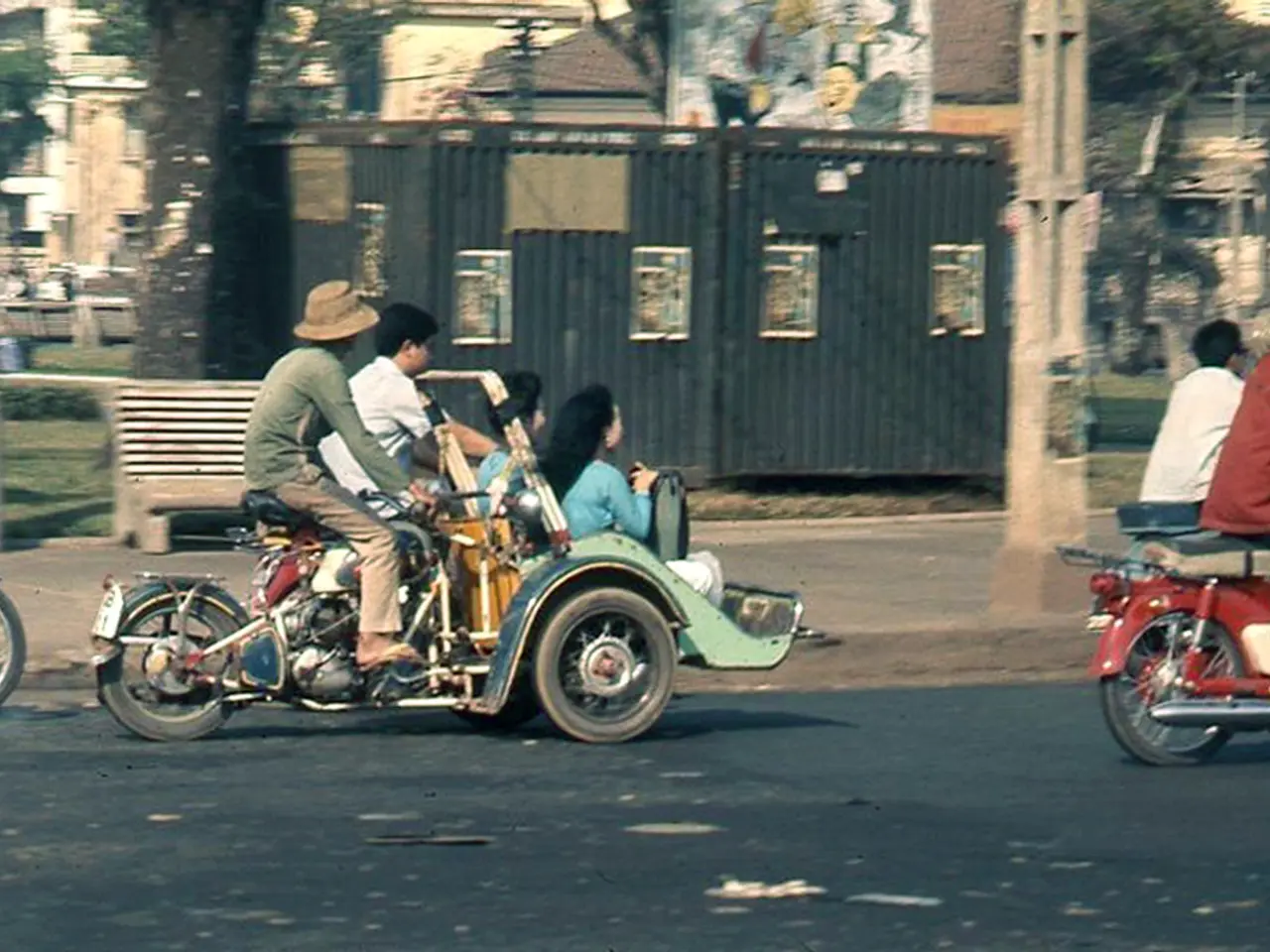Active construction of travel routes for non-motorized transportation, such as walking and cycling, is contributing to Scotland's health improvement.
In the heart of Scotland, an ambitious infrastructure programme called Places for Everyone is transforming the way people travel, fostering a healthier and safer nation, and reducing inequalities.
The programme, which focuses on expanding and improving infrastructure for walking, wheeling, and cycling, has been hailed as broadly positive across health, safety, and the reduction of inequalities. By making active travel easier and safer, these initiatives encourage more physical activity among residents, directly linked to improved physical health, including reduced risks of obesity, heart disease, and other lifestyle-related conditions.
The creation of green corridors and safer routes, such as those developed through Places for Everyone, also enhances access to greenspaces, contributing to mental well-being and community health.
Projects under the Places for Everyone banner have significantly enhanced public safety by redesigning streets and routes to better accommodate all users, particularly vulnerable groups such as children, older adults, and people with disabilities. Features like improved crossings, dedicated cycle lanes, and well-lit pathways reduce accident risks and make journeys safer for pedestrians and cyclists.
The focus on safer school routes specifically helps to tackle congestion and reduce air pollution near schools, further protecting children’s health and safety.
Places for Everyone projects are often designed with a strong emphasis on accessibility and inclusion. Funding for infrastructure improvements is targeted to areas with higher levels of deprivation or need, ensuring that benefits are distributed more equitably across communities. By addressing physical barriers and improving connectivity in disadvantaged areas, these initiatives help reduce transport-related inequalities and increase access to employment, education, and health services for underserved populations.
Across a sample of five project sites, the estimated carbon emission rates from vehicles have reduced by 7% on average. Since 2016, Scotland's infrastructure programme, Places for Everyone, has delivered over 111 miles of cycle, pedestrian, or shared use paths.
In 2023-24, £76m was invested in active travel infrastructure via Places for Everyone, making it the largest active travel programme in Scotland at nearly 46% of the total investment.
Results indicate there has been a corresponding reduction in car travel, with surveys showing some active travel trips along new routes are replacing journeys by car. Completed Places for Everyone projects are helping encourage more active travel among protected groups, such as schools with projects located within 500m having substantially higher rates of walking, wheeling, and cycling to school compared to the Scottish average.
The number of trips has increased across every age group on Places for Everyone routes. Up to five years after completion, the number of trips made by people from more deprived areas has nearly doubled, with an 89% increase from around 97,000 annually to 184,000.
The Children's Walking and Cycling Index shows that 77% of children in Scotland support more segregated cycle paths along roads. The South City Way in Glasgow has connected the Southside with the City Centre, and nearly half of these paths are newly constructed, with the remainder being upgrades to existing routes.
The new paths have resulted in over 1.3 million more trips per year made by people choosing to walk, wheel, and cycle. Across newly delivered projects, 94% of people who responded agreed that a desire 'to get exercise' influenced their choice to walk, wheel, or cycle along one of the routes.
Carole Patrick, UK Director for the National Cycle Network, stated that Places for Everyone has played a crucial role in improving safety for people traveling actively and for all road users. The full report on Places for Everyone can be requested by contacting Scotland@our website for more information.
- The Places for Everyone programme's emphasis on expanding green corridors and safer routes for walking, cycling, and wheeling not only cultivates a healthier nation by encouraging physical activity but also contributes to environmental-science through the reduction of carbon emissions by 7%.
- In alignment with the health-and-wellness sector, projects under the Places for Everyone banner set aside funds for infrastructure improvements in deprived areas, hence addressing physical barriers and improving connectivity, which directly correlates to improved nutrition as more people have increased access to food options through better transport links.
- As the focus on environmental-science becomes more pertinent, the Places for Everyone programme covers climate-change by implementing active travel infrastructure, stimulating a shift from automobile usage to more sustainable, eco-friendly transportation methods like walking, cycling, and wheeling, thereby significantly reducing air pollution and promoting a greener and cleaner environment.




